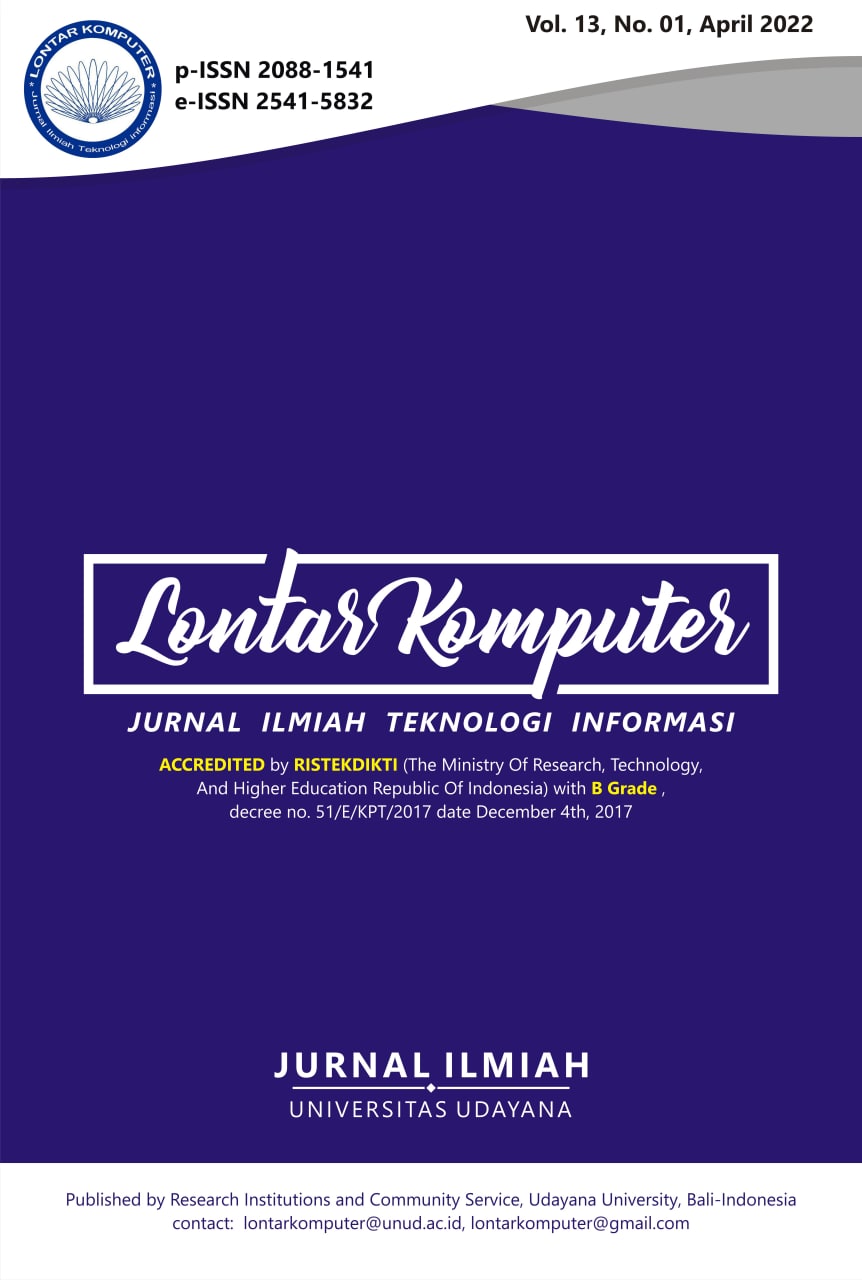Classification of Stroke Using K-Means and Deep Learning Methods
Abstract
Stroke is a disease caused by blockage or rupture of blood vessels in the brain due to disruption of blood flow, where the blood supply to an area of the brain is suddenly interrupted. This study discusses stroke classification using the K-Means and Deep Learning methods. This study aims to segment patient data to produce patient class labels and classify the results of grouping the data to test the performance of the classification algorithm used. The 4,906 patient data used in this study were grouped using the K-Means method into multiple clusters, including 2 clusters, 3 clusters, 4 clusters, and 5 clusters, and the data grouping findings will be classified. The cluster validation method is the Davies Bouldin Index and the Silhouette Index, while the algorithm used in the classification process is the Deep Learning Algorithm. The classification results produce the most excellent accuracy value in the number of clusters tested, namely 2 clusters of 99.71%.
Downloads
References
[2] Riskesdas, “Rikesdas 2013,” Riset Kesehatan Dasar, 2013.
[3] J. Han and M. Kamber, "Data Mining: Concepts and Techniques (Solution Manual)," San Francisco, CA, itd: Morgan Kaufmann, 2006.
[4] M. Mirqotussa’adah, M. A. Muslim, E. Sugiharti, B. Prasetiyo, and S. Alimah, “Penerapan Dizcretization dan Teknik Bagging Untuk Meningkatkan Akurasi Klasifikasi Berbasis Ensemble pada Algoritma C4.5 dalam Mendiagnosa Diabetes,” Lontar Komputer, vol. 8, no. 2, p. 135, Aug. 2017, DOI: 10.24843/LKJITI.2017.v08.i02.p07.
[5] I. Lishania, R. Goejantoro, and N. Nasution, “Perbandingan Klasifikasi Metode Naive Bayes dan Metode Decision Tree Algoritma ( J48 ) pada Pasien Penderita Penyakit Stroke di RSUD Abdul Wahab Sjahranie Samarinda,” Jurnal EKSPONENSIAL, vol. 10, no. 2, pp. 135–142, 2019.
[6] FEDESORIANO, "Stroke Prediction Dataset," 2020. [Online]. Available: https://www.kaggle.com/datasets/fedesoriano/strokeprediction-dataset.
[7] Kurniabudi, D. Stiawan, Darmawijoyo, M. Y. bin bin Idris, A. M. Bamhdi, and R. Budiarto, "CICIDS-2017 Dataset Feature Analysis with Information Gain for Anomaly Detection," IEEE Access, vol. 8, pp. 132911–132921, 2020, DOI: 10.1109/ACCESS.2020.3009843.
[8] G. Chandrashekar and F. Sahin, "A survey on feature selection methods," Computers and Electrical Engineering, vol. 40, no. 1, pp. 16–28, Jan. 2014, DOI: 10.1016/j.compeleceng.2013.11.024.
[9] D. A. Anggoro and W. Supriyanti, "Improving accuracy Bb applying Z-score normalization in linear regression and polynomial regression model for real estate data," International Journal of Emerging Trends in Engineering Research, vol. 7, no. 11, pp. 549–555, Nov. 2019, DOI: 10.30534/ijeter/2019/247112019.
[10] K. P. Sinaga and M. S. Yang, "Unsupervised K-means clustering algorithm," IEEE Access, vol. 8, pp. 80716–80727, 2020, DOI: 10.1109/ACCESS.2020.2988796.
[11] R. W. Sembiring Brahmana, F. A. Mohammed, and K. Chairuang, "Customer Segmentation Based on RFM Model Using K-Means, K-Medoids, and DBSCAN Methods," Lontar Komputer, vol. 11, no. 1, p. 32, Apr. 2020, DOI: 10.24843/LKJITI.2020.v11.i01.p04.
[12] Z. Q. Zhao, P. Zheng, S. T. Xu, and X. Wu, "Object Detection with Deep Learning: A Review," IEEE Transactions on Neural Networks and Learning Systems, vol. 30, no. 11, pp. 3212–3232, 2019, DOI: 10.1109/TNNLS.2018.2876865.
[13] J. Heaton, "Ian Goodfellow, Yoshua Bengio, and Aaron Courville: Deep learning," Genetic Programming and Evolvable Machines, vol. 19, no. 1–2, 2018, DOI: 10.1007/s10710-017-9314-z.
[14] C. L. Zhang and J. Wu, "Improving CNN linear layers with power mean non-linearity," Pattern Recognition, vol. 89, pp. 12–21, 2019, DOI: 10.1016/j.patcog.2018.12.029.
[15] D. A. Prasetya and I. Mujahidin, "2.4 GHz Double Loop Antenna with Hybrid Branch-Line 90-Degree Coupler for Widespread Wireless Sensor," 2020. DOI: 10.1109/EECCIS49483.2020.9263477.
[16] B. Jumadi Dehotman Sitompul, O. Salim Sitompul, and P. Sihombing, "Enhancement Clustering Evaluation Result of Davies-Bouldin Index with Determining Initial Centroid of K-Means Algorithm," Journal of Physics: Conference Series, vol. 1235, no. 1, pp. 1–6, 2019, DOI: 10.1088/1742-6596/1235/1/012015.
[17] A. A. R. Fernandes, Solimun, Nurjannah, U. A. I. Billah, and N. M. A. A. Badung, "Comparison of Cluster Validity Index and Distance Measures Using Integrated Cluster Analysis and Structural Equation Modeling the Warp-PLS Approach," Journal of Southwest Jiaotong University, vol. 56, no. 3, pp. 157–168, Jun. 2021, DOI: 10.35741/issn.0258-2724.56.3.13.
[18] H. Yasar and M. Ceylan, "A novel comparative study for detection of Covid-19 on CT lung images using texture analysis, machine learning, and deep learning methods," Multimedia Tools and Applications, vol. 80, no. 4, 2021, DOI: 10.1007/s11042-020-09894-3.
The Authors submitting a manuscript do so on the understanding that if accepted for publication, the copyright of the article shall be assigned to Jurnal Lontar Komputer as the publisher of the journal. Copyright encompasses exclusive rights to reproduce and deliver the article in all forms and media, as well as translations. The reproduction of any part of this journal (printed or online) will be allowed only with written permission from Jurnal Lontar Komputer. The Editorial Board of Jurnal Lontar Komputer makes every effort to ensure that no wrong or misleading data, opinions, or statements be published in the journal.
 This work is licensed under a Creative Commons Attribution 4.0 International License.
This work is licensed under a Creative Commons Attribution 4.0 International License.























